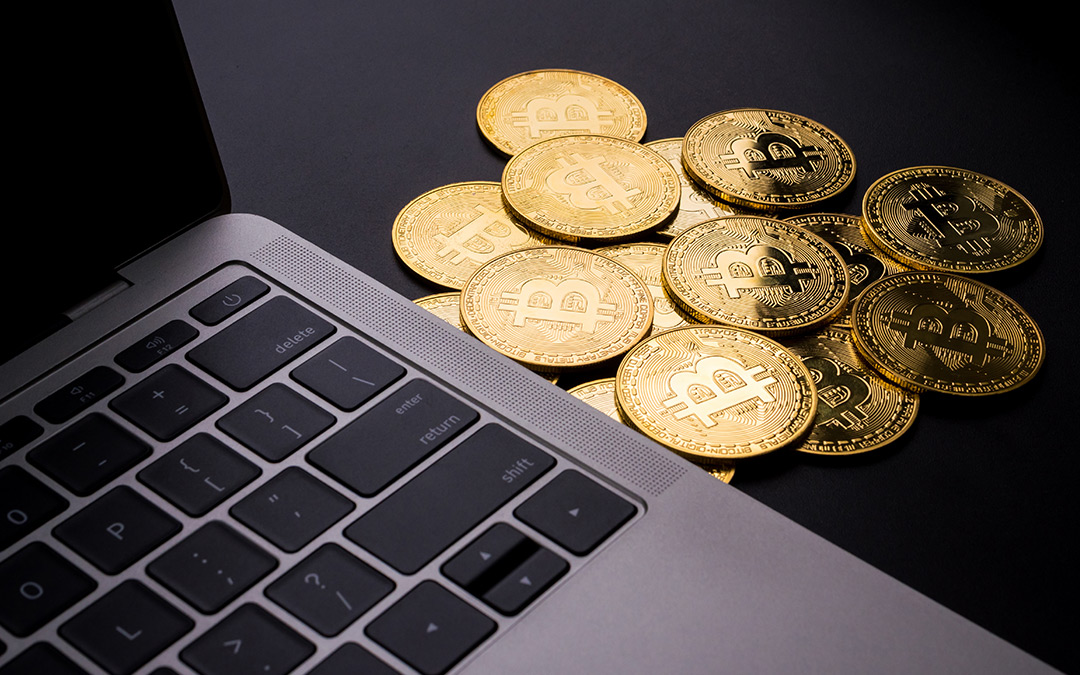
Financial Advisor Branding: From Logo to LinkedIn in a Digital-First World
May 13, 2025
Are You Using the Right TAMP for Your Financial Advisory Practice?
May 27, 2025From cryptocurrencies to non-fungible tokens (NFTs), many institutional investors initially dismissed digital assets as purely speculative investments. However, this quickly evolving asset class is increasingly capturing institutional investors’ attention.
As of 2024, 67% of surveyed institutional investors believe that digital assets have a role in their investment portfolios, and 69% plan to increase their allocations in the next two to three years. What’s more, institutional investors currently rank cryptocurrencies as the third-best asset class for generating risk-adjusted returns, surpassed only by U.S. private and public equities.
So, what’s spurring this positive shift in institutional sentiment? And how can you use digital assets to future-proof your firm? Below, we’ll define the core categories of digital assets, examine their history, and explore the key factors fueling their growing adoption in 2025.
What Are Digital Assets?
Digital assets encompass a broad range of virtual assets. Some of these assets act as currencies, while others serve as commodities or securities.
Here are the four main categories of digital assets in 2025:
- Cryptocurrencies – Cryptocurrencies (a.k.a. “crypto”) are digital currencies that operate on decentralized blockchains. Bitcoin and Ethereum are two of the most popular examples. As of 2025, the global cryptocurrency market is over $3 trillion.
- Tokenized money – Tokenized money refers to digital assets that replicate the value and function of fiat currency. For example, stablecoins like Tether (USDT) and USD Coin (SDCB) are pegged to the U.S. dollar. Central bank digital currencies (CBDCs) are another type of tokenized money issued by governments. Over 100 central banks around the globe are exploring CBDCs for their ability to enhance the efficiency of payments and reduce transaction costs. China’s digital yuan (e-CNY) and India’s e-Rupee are some notable examples.
- Tokenized assets – Tokenization is the process of recording ownership rights of real or virtual assets on a blockchain. This process enables real estate, fine art, and intellectual property to be broken into fractional shares, making them more accessible and easier to trade. NFTs are a subtype of tokenized assets that surged in popularity in 2021. These digital assets represent unique virtual items, such as artwork or music rights. Using smart contracts, NFTs facilitate secure ownership transfers and automate royalty distribution. Many large asset managers and global banks are currently interested in tokenizing traditional financial instruments, including private credit, U.S. Treasuries, and alternative investments. By tokenizing these assets, institutions can streamline their settlement processes and broaden access to historically illiquid or hard-to-reach markets.
- Indirect exposure investment vehicles – Not all investors want to deal with the complexities of holding spot cryptocurrencies, from setting up digital wallets to navigating unregulated exchanges. Fortunately, the following vehicles offer investors a convenient alternative:
- Exchange-traded funds (ETFs), which track Bitcoin, Ether, and other cryptocurrencies.
- Futures-based funds that trade cryptocurrency derivatives.
- Mutual funds and trusts that hold shares in companies that are involved in blockchain technology.
The Evolution of Digital Assets From 2008 to 2025
Now that you understand the most popular digital assets in today’s market, you may be curious about their history. While the earliest crypto adopters were tech enthusiasts, libertarians, and dark web users, digital assets and their supporters have evolved considerably in recent years.
Here are a few noteworthy events in digital assets’ evolution:
- 2008 – Motivated by a mistrust of centralized financial systems, the anonymous “Satoshi Nakamoto” invented Bitcoin after the 2008 financial crisis.
- 2009 – The first block of Bitcoin was officially mined.
- 2015 – Russian-Canadian programmer Vitalik Buterin launched Etherium, introducing programmable smart contracts into the digital asset space.
- 2017 – Bitcoin was featured on the Chicago Mercantile Exchange (CME), the world’s largest futures exchange.
- 2019 – Several large crypto exchanges, including Coinbase and Gemini, launched institutional-grade custodial services to make digital assets more accessible for institutional investors.
- 2021 – Coinbase went public with a $100 million business valuation.
- 2021 – Multiple NFTs achieved multi-million dollar sales, including a piece of Beeple artwork that sold for a whopping $69 million.
- 2022 – Another massive cryptocurrency exchange, FTX, filed for bankruptcy after facing damaging allegations of mismanagement and fraud.
- 2024 – The first spot Bitcoin ETF was approved, allowing investors to seamlessly integrate Bitcoin into their traditional portfolios while bypassing the custodial challenges associated with direct ownership.
- 2024 – Following President Trump’s presidential win, Bitcoin surpassed $100,000 for the very first time.
As you can see, digital assets have made great strides over the past two decades. Thanks to these regulatory milestones and market shifts, they’ve transformed from a fringe concept into a trillion-dollar asset class. This growth is only projected to accelerate as institutional and retail investors ramp up their participation.
Read More: The Impact of Trump’s Tariffs: What Investors Need to Know
Analyzing Institutional Investors’ Perspectives on Digital Assets
Until recently, many institutional investors avoided digital assets due to their volatility, regulatory uncertainty, and limited infrastructure. However, recent research shows that these sentiments are shifting in a new direction.
Just take a look at these statistics from Fidelity’s 2024 Institutional Investor Digital Assets Study:
- 55% of surveyed investors believe that digital assets are here to stay for the long term.
- Over 25% of investors have developed a more positive perception of digital assets.
- 65% of investors plan to buy or invest in digital assets in the future.
- Those who aren’t investing yet claim they’re waiting on more regulatory clarity.
So, what’s driving this shift toward greater acceptance of digital assets? Institutional investors who view this asset class favorably point to the following factors:
- 23% – Increased understanding and broader acceptance
- 19% – Potential for growth and greater returns
- 15% – Opportunities for ongoing technological innovation
- 11% – Clearer regulations
- 9% – Less volatility
- 7% – Diversification
While Fidelity’s findings show that many institutional investors feel positive about digital assets, some remain skeptical. Investors who still hold a negative view of digital assets cite these reasons:
- 33% – Too many fraudulent scandals
- 24% – Bad press
- 19% – Unclear regulatory frameworks
- 17% – Volatility
- 16% – Poor market conditions
- 10% – Lack of oversight
How Much Are Institutional Investors Allocating to Digital Assets in 2025?
Perceptions around digital assets are steadily improving. Even so, most institutional investors only place a small portion of their portfolios into this asset class.
Here are some interesting statistics from a recent EY Parthenon study:
- 35% of institutional asset managers allocate 1% to 5% of portfolios to digital assets.
- 45% of institutions with over $500 billion in AUM allocate over 1% to digital assets.
- 36% of hedge funds allocate over 5% of their portfolios to digital assets, making them the most bullish segment of institutional investors.
While most institutions plan to increase their digital asset investments over the next few years, the majority (62%) intend to gain exposure to crypto through registered vehicles rather than direct holdings. Additionally, 47% of hedge funds and institutional asset managers want to tokenize their own assets to access new investors, increase capital, and enhance liquidity.
5 Benefits of Investing in Digital Assets
In 2025, many institutional investors are approaching digital assets with cautious optimism. After all, these assets have the potential to provide:
- Improved diversification – As every skilled investor knows, diversification is the key to a resilient portfolio. While a 60/40 split of stocks and bonds offered sufficient diversification in the past, these two asset classes have become increasingly correlated in recent years. In contrast, digital assets still have a low correlation to equities, bonds, and commodities. From 2015 to 2023, portfolios with modest crypto exposure saw Sharpe ratio improvements of 0.5 to 0.8 points compared to traditional allocations, showcasing crypto’s potential to boost risk-adjusted returns.
- Opportunity for outsized gains – Despite periods of significant volatility, digital assets like Bitcoin and Ethereum have outperformed nearly every other asset class over the past decade. Past performance doesn’t guarantee future results, but these assets’ impressive track record indicates that investors may see outsized gains from conservative allocations.
- Hedging benefits – Amid ongoing inflation, geopolitical instability, and currency debasement, many investors are seeking a safe haven and believe digital assets may offer some protection. For example, Bitcoin’s fixed supply of 21 million coins sets it apart from fiat currency’s unlimited issuance, positioning it as a potential hedge against inflation.
- Client demand – As more wealth moves hands from Baby Boomers to Millennials and Gen Z, financial institutions are striving to align their practices with younger generations’ preferences. Young investors express the most enthusiasm for this emerging asset class, prompting institutional investors to expand their digital asset offerings.
Read More: How to Use Different Management Styles to Enhance Your Clients’ Returns
Key Developments Supporting Digital Asset’s Growth
While digital assets present enticing benefits, they haven’t always had sufficient infrastructure or regulatory clarity to attract institutional investors. These barriers are fading thanks to:
- Innovative custody solutions – The introduction of qualified custodians has removed one of the largest barriers to entry for institutional investors. Qualified custodians give institutions a secure, insured, and compliant way to store digital assets.
- ETF approval – The SEC’s approval of spot Bitcoin ETFs marked a major milestone in regulatory acceptance. It also paved the way for institutional investors to allocate capital to Bitcoin and other cryptocurrencies through regulated investment vehicles, such as index funds, ETFs, and separately managed accounts (SMAs).
- Improved market data and analytics – Thanks to the emergence of institutional-grade analytics, it’s easier than ever for institutions to analyze digital assets’ risk, buyer behavior, and market trends.
Digital Assets’ Ongoing Challenges
Despite significant progress, several barriers still exist for institutions looking to adopt digital assets. These challenges include:
- Regulatory questions – While ETF approvals are a step in the right direction, there’s still some uncertainty surrounding the classification of digital assets. For example, the CFTC considers Bitcoin and Ether to be commodities, while the SEC views other tokens as securities. Additionally, it’s still unclear how decentralized finance (DeFi) platforms should be regulated and what specific frameworks apply to stablecoins. Until these regulatory ambiguities are addressed, many institutions may hold off from embracing digital assets.
- Perceived volatility – Many digital assets continue to be associated with high volatility. This perception persists, despite the fact that Bitcoin’s 30-day volatility has fallen substantially over the past seven years. When compared to the “Magnificent Seven” (Apple, Microsoft, Alphabet, Amazon, Nvidia, Meta, and Tesla), Bitcoin’s volatility falls between Meta and Amazon.
- Market immaturity – While EFTs have existed for decades, gaining exposure to crypto through EFTs is a relatively new phenomenon. Thus, its limited historical performance data is leading some firms to wait until the market proves itself over time.
- Custody risk – Despite steady advances in digital asset custody, some institutions are still wary about current custodians’ management practices, insurance coverage, and risk of fraud.
- Reputational concerns – Lastly, some institutions worry about reputational risk associated with digital assets. For example, Bitcoin’s mining practices and environmental consequences present some ESG concerns.
Many of these challenges will likely be addressed in the coming years, so it’s crucial for future-focused institutional investors to stay up to date on the latest regulatory changes and operational solutions.
Practical Tips for Institutional Investors
Whether you’re an institutional investor looking to future-proof your portfolio or an independent financial advisor interested in offering digital assets to your clients, it’s important to:
- Stay educated – Establish a team within your firm to study digital assets or work with an expert investment committee that specializes in alternative investments.
- Start with indirect exposure – Mitigate the operational complexity and regulatory risk of investing in digital assets by utilizing ETFs, index funds, and SMAs.
- Secure the right partnerships – Invest in digital assets with confidence by consulting with reputable custodians, fund managers, and legal counsel at every stage.
Read More: 10 Benefits of Leveraging the Expertise of an Investment Committee
Digital Assets: A New Paradigm, Not Just a Passing Trend
Digital assets are fundamentally changing how value is created, stored, and exchanged. As a result, investors and financial advisors should stay up to date as the digital asset ecosystem continues to evolve.
If you’re searching for a trusted partner to help you integrate alternative assets, Alden Investment Group has you covered. As a Registered Investment Advisor (RIA) and broker-dealer, we offer tailored strategies to seamlessly incorporate digital assets and other alternative investments into your portfolio.
Our investment committee is well-versed in a variety of alternative investment vehicles, so they can help you employ everything from commodities to cryptocurrencies with confidence.
Ready to explore how digital assets can enhance your portfolio? Reach out to Alden Investment Group today!
Please note that digital tokens and etfs are very risky and investors should limit their exposure to the asset class.
Sources:
Fidelity. Institutional Investor Digital Assets Study: Key Findings.
https://www.fidelitydigitalassets.com/sites/g/files/djuvja3256/files/acquiadam/June%202024%20Institutional%20Investors%20Digital%20Asset%20Survey%20-%20Key%20Findings%20%2805.29%29.pdf
EY Partheon. Staying the course: institutional investor outlook on digital assets.
https://www.ey.com/en_us/insights/financial-services/how-institutions-are-investing-in-digital-assets
State Street Global Advisors. Digital Assets: The Next Frontier for Markets and Investors.
https://www.ssga.com/us/en/intermediary/insights/digital-assets-the-next-frontier-for-markets-and-investors
Forbes. Cryptocurrency Prices Today By Market Cap.
https://www.forbes.com/digital-assets/crypto-prices/?sh=1ac375962478
IMF. Cyber Resilience of the Central Bank Digital Currency Ecosystem.
https://www.imf.org/en/Publications/fintech-notes/Issues/2024/08/27/Cyber-Resilience-of-the-Central-Bank-Digital-Currency-Ecosystem-554090
World Economic Forum. What are non-fungible tokens (NFTs) and where are they useful?
https://www.weforum.org/stories/2023/10/nfts-non-fungible-tokens-blockchain/
CoinTracker. Who created Bitcoin? Unveiling BTC’s cryptic origins.
https://www.cointracker.io/blog/who-created-bitcoin
CNBC. Bitcoin debuts on the world’s largest futures exchange, and prices fall slightly.
https://www.cnbc.com/2017/12/17/worlds-largest-futures-exchange-set-to-launch-bitcoin-futures-sunday-night.html
Brave New Coin. Institutional-grade crypto custody solutions have arrived. Now what?
https://bravenewcoin.com/insights/institutional-grade-crypto-custody-solutions-have-arrived-now-what
CNN. Coinbase goes public with a nearly $100 billion valuation.
https://www.cnn.com/2021/04/14/investing/coinbase-stock-direct-listing
NBC News. Art and NFTs: Beeple reflects one year after historic $69 million digital art sale.
https://www.nbcnews.com/tech/tech-news/art-nfts-beeple-reflects-one-year-historic-69-million-digital-art-sale-rcna18989
Forbes. SEC Approves Spot Bitcoin ETFs—First Crypto Funds Of Kind.
https://www.forbes.com/sites/dereksaul/2024/01/10/sec-approves-spot-bitcoin-etfs-first-crypto-funds-of-kind/
Reuters. Bitcoin storms above $100,000 as Trump 2.0 fuels crypto euphoria.
https://www.reuters.com/technology/bitcoin-tops-100000-optimism-over-trump-crypto-plans-2024-12-05/
Bloomberg. Taxation of Cryptocurrency and Other Digital Assets.
https://pro.bloombergtax.com/insights/corporate-tax-planning/cryptocurrency-taxation-regulations/
BlackRock. Rebuilding resilience in 60/40 portfolios.
https://www.blackrock.com/us/individual/insights/60-40-portfolios-and-alternatives
Yahoo! Finance. How a Small Crypto Investment Can Improve Your Portfolio.
https://finance.yahoo.com/news/small-crypto-investment-improve-portfolio-154037317.html
CoinTelegraph. Bitcoin outperformed nearly every asset class in past year.
https://cointelegraph.com/news/bitcoin-outperformed-nearly-every-asset-class-past-year-van-eck
ScienceDirect. Bitcoin: An inflation hedge but not a safe haven.
https://www.sciencedirect.com/science/article/pii/S1544612321003810
SEC. Statement on the Approval of Spot Bitcoin Exchange-Traded Products.
https://www.sec.gov/newsroom/speeches-statements/gensler-statement-spot-bitcoin-011023





